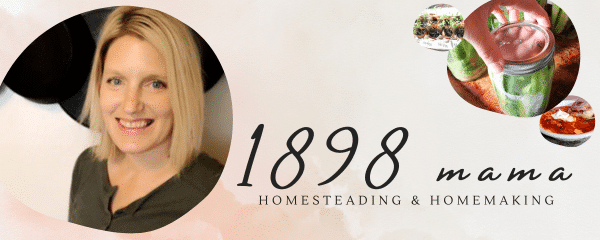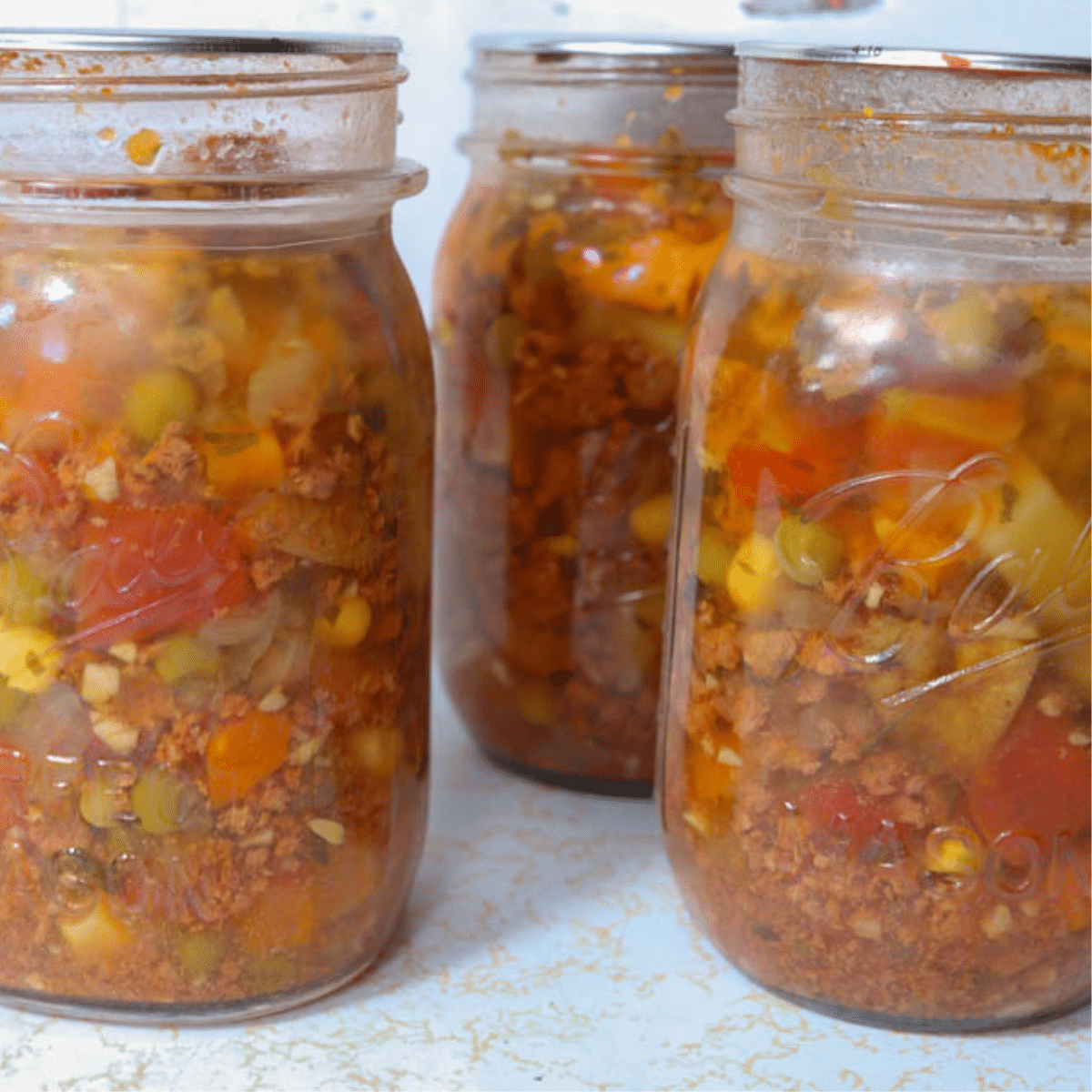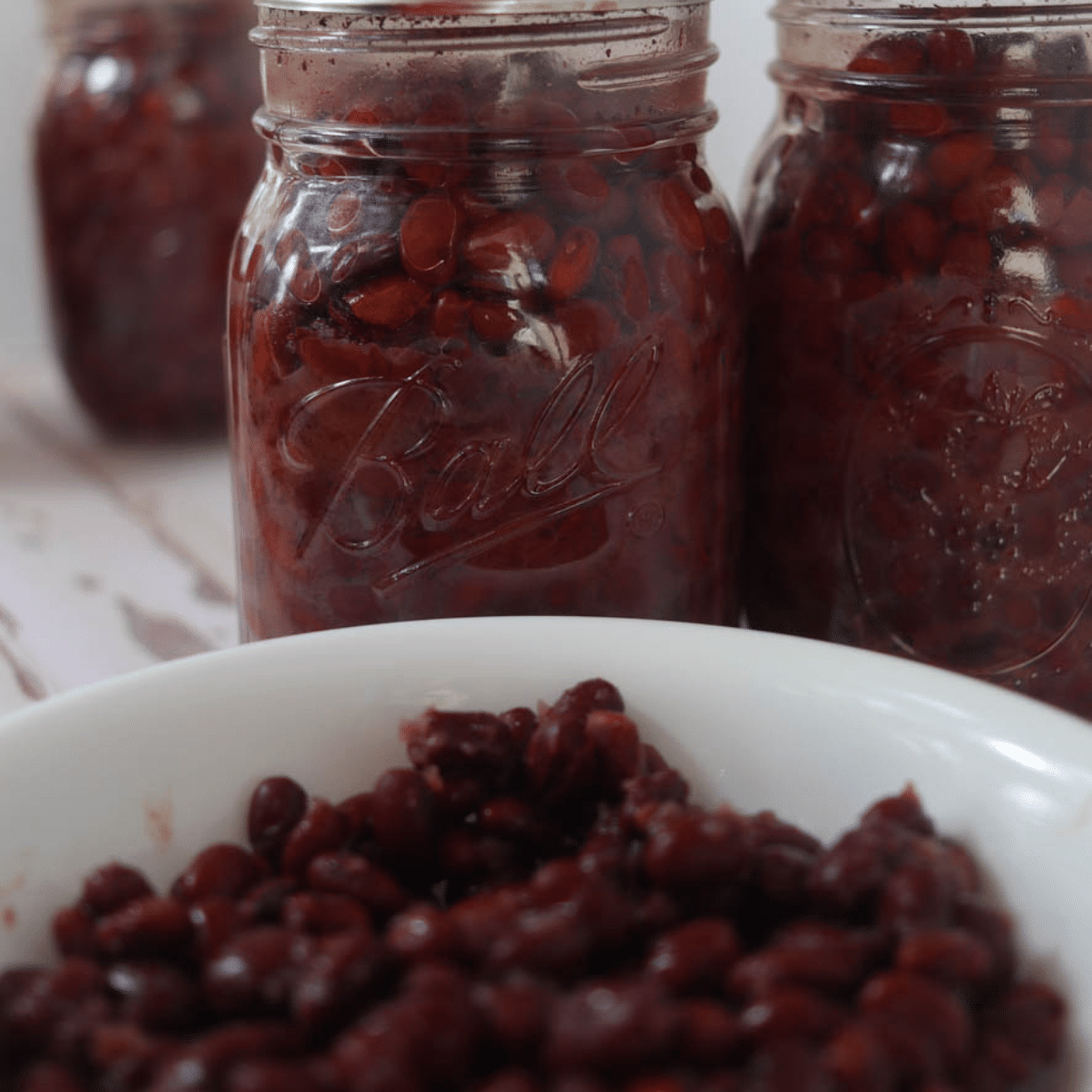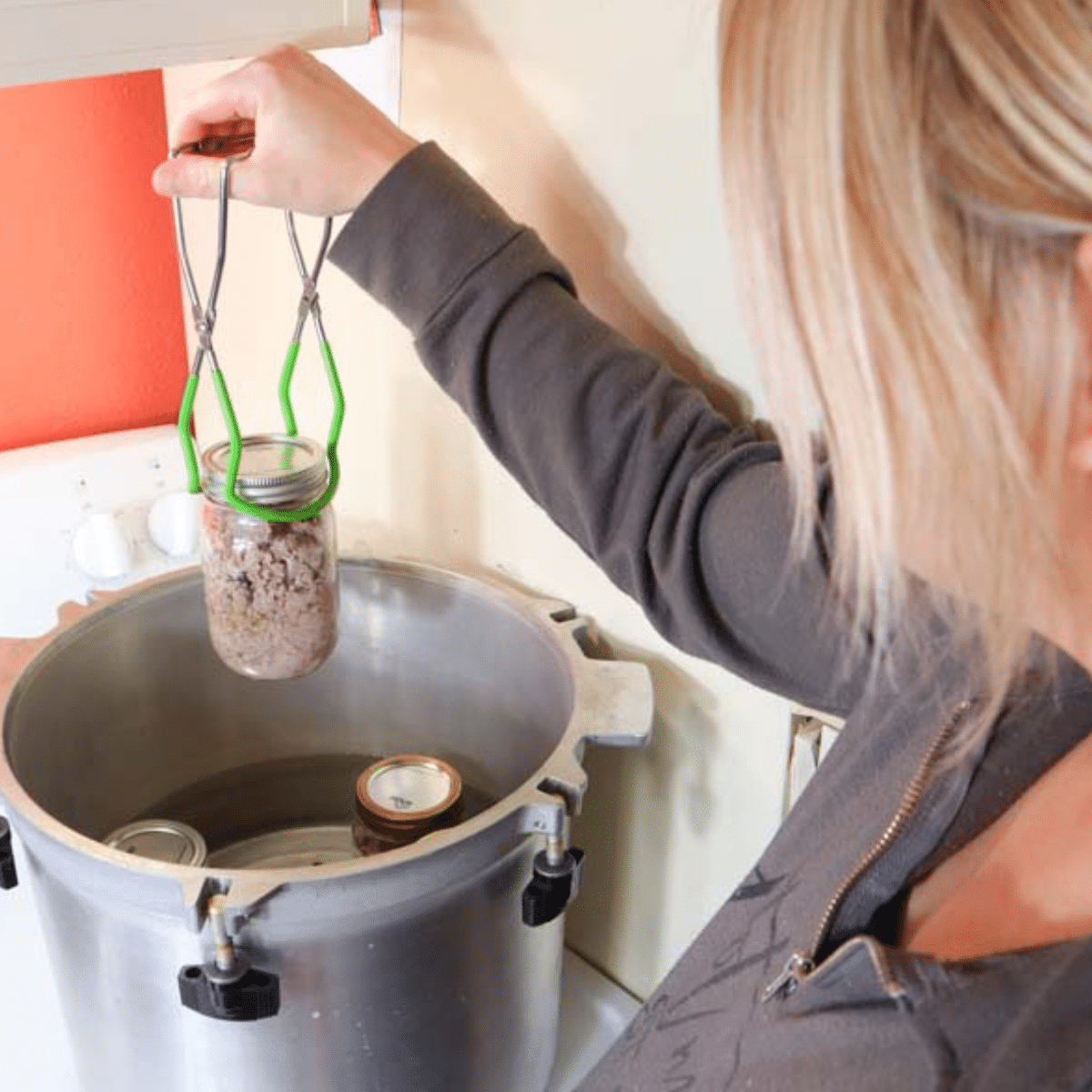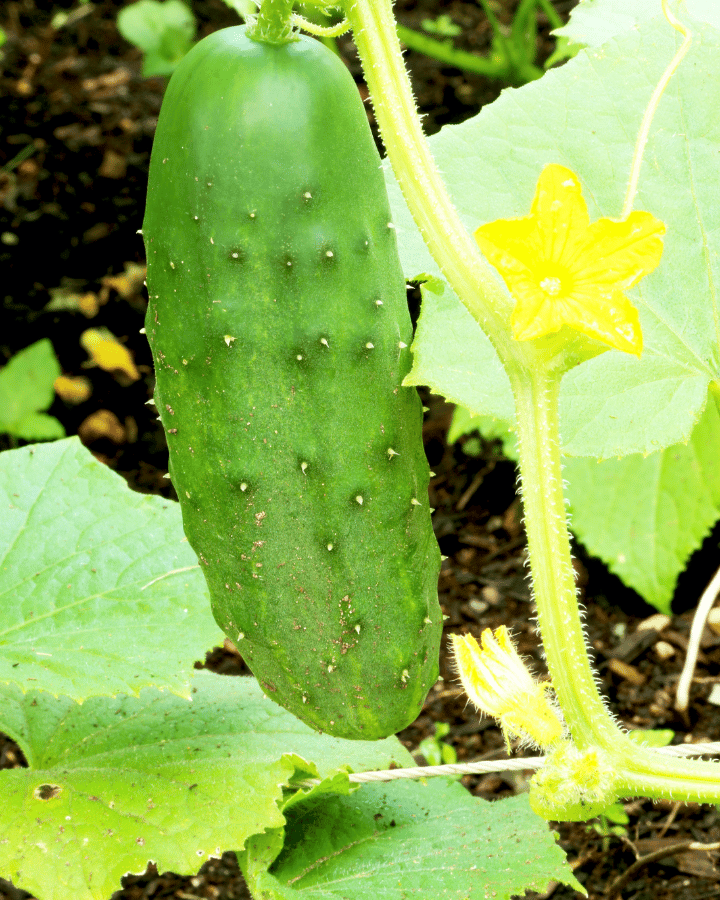How To Grow Onions
Onions are used almost daily in my kitchen. Therefore, knowing how to grow onions is kind of important. And since you are here, I’m guessing you enjoy cooking with onions just as much as I do. Read on to learn how to grow onions at home, whether from seed, seedlings, or sets.
Onions are a cool-season crop that have a very long growing season. In fact, they are the first plant to be seed started for most gardeners.
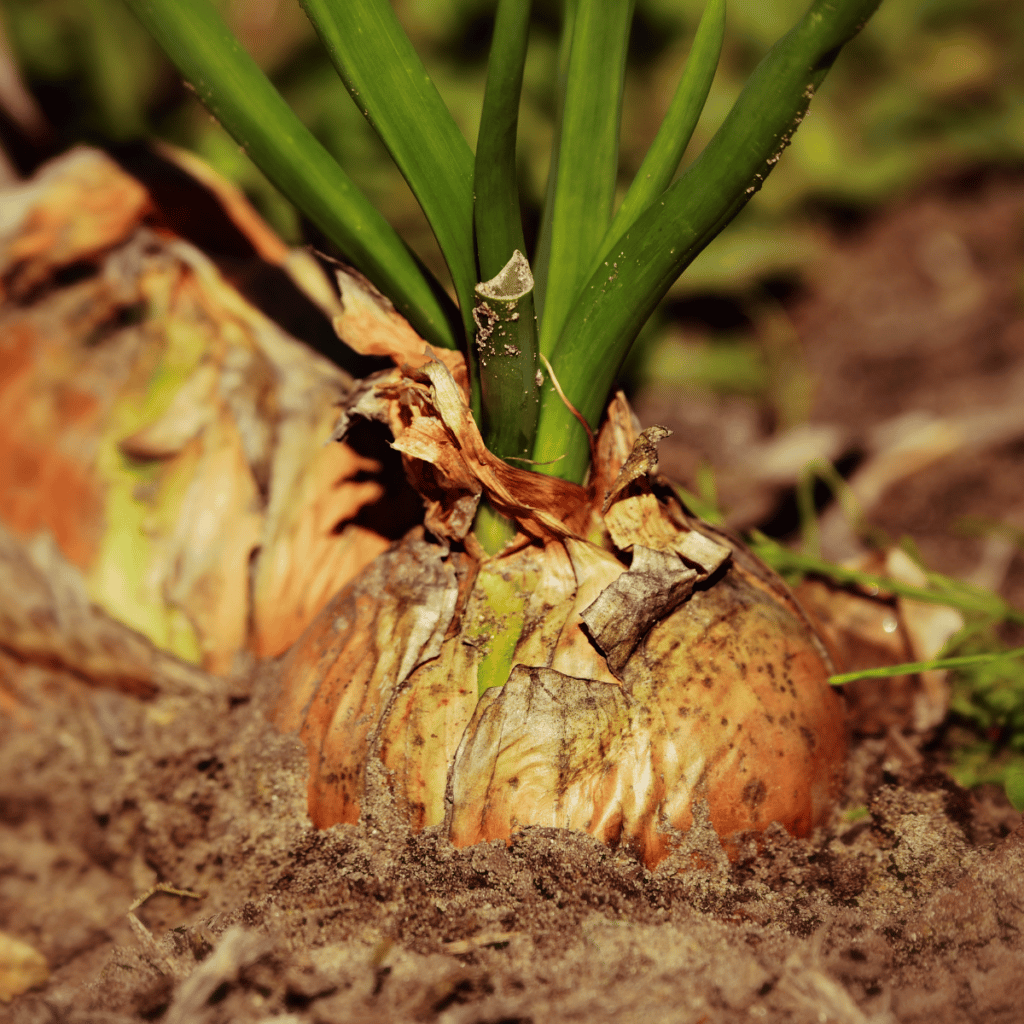
WHAT TYPE OF ONION TO GROW
There are a many onion varieties to choose from based on how many daylight hours your garden receives.
If you are in the northern latitude, for best results plant long-day onions.
If you are in the south, you will want to plant a short-day onions. Honestly, I don’t know much about those, since I live in South Dakota.
Intermediate day onions are also an option for those in “the middle.”
If you aren’t sure of which option to choose, check out this map from Johnny’s Seeds to see exactly which type of onion to grow.
As far as varieties of onions go, you can choose any kind of onions you like. Yellow onions, red onions, and white onions are all great. Just make sure that you are planting a good option for storage onions if that is your end goal. Not all onions are the right type of onions for long keeping and you don’t want to end up having to buy onions from the grocery store after putting in all the work of growing onions at home.
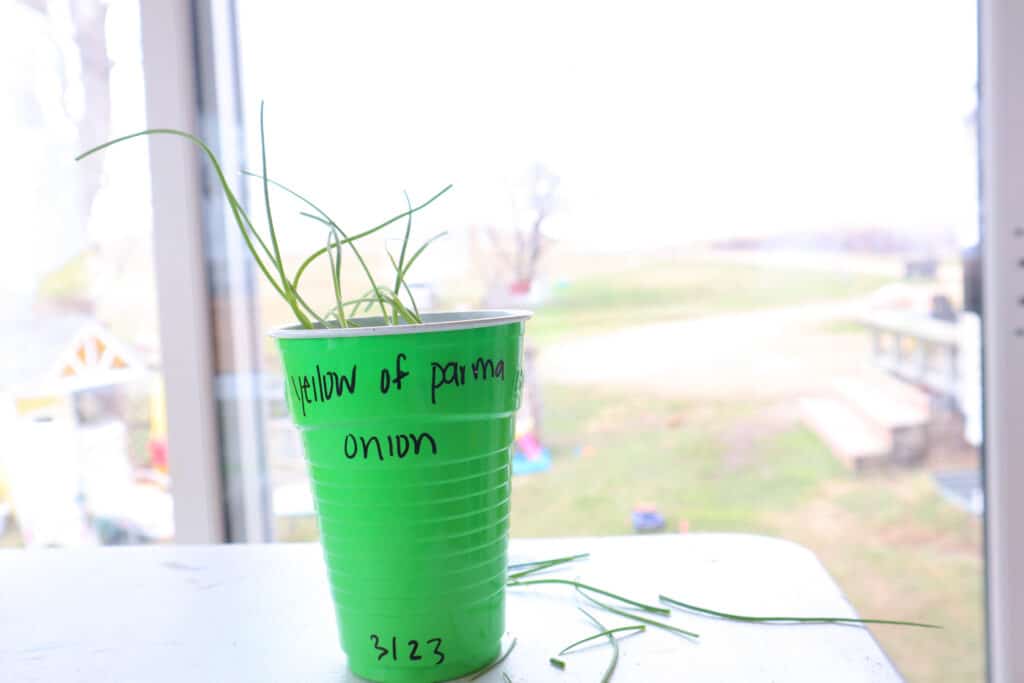
WHEN TO GROW ONIONS
Most gardeners plant onions in early spring. You can also plant in the late summer or early fall for an overwintered spring harvest.
If you are planting seeds yourself, you will want to start seeds in late winter or very early spring, as onions can take three to five months to reach maturity. A good rule of thumb is to plant seeds no later than a month before your last frost date for spring plantings. But even that is pushing the boundaries a bit.
Just remember that the longer you wait to plant onions, the smaller your onion plants will be. Waiting too long won’t give the onion plants enough time to mature before bulbing.
HOW TO GROW ONIONS FROM SEED
Growing onions from seeds is actually fairly simple, it just takes patience. Seeds generally take 12-16 weeks before they are ready to transplant. You can start seeds indoors or sow seeds directly outside. Another option is the winter sowing method.
This post contains affiliate links, which means I make a small commission at no extra cost to you. See my full disclosure here.
HOW TO START ONIONS INDOORS
I like to plant seeds indoors to make sure there is plenty of time for my onions to grow. When it is time to plant in the garden, the seedlings will be ready to transplant. Since I live in the northern hemisphere, the direct-sow method doesn’t give onions here enough time to mature.
Start onion seeds between 8-10 weeks before your average last spring frost date.
Get some potting soil and some containers to put them in. I like to start my seeds in solo cups with a hole poked in the bottom.
Sow several seeds in each container. When you transplant them later, you will just gently pull them apart to plant individually.
Before the onion seeds germinate, make sure the temperature is decently warm, around 70-75 degrees fahrenheit. A heat mat will help with this if you need. After they germinate, the temp can be brought down a bit.
Keep the soil damp and provide 12 hours of light for them with a grow light daily.
Once the onions reach about 5 or 6 inches tall, trim the tips of the greens down to 3 or 4 inches. The reason for this is that the plant puts more focus into a stronger root development. However, don’t throw away those tips, you can eat them as green onions!
HOW TO WINTER SOW ONIONS
Winter sowing is when you sow seeds outside in a covered container. Basically, it’s like a mini-greenhouse. Most people use store-bought milk jugs for winter sowing. Start winter sowing onion seeds around January or February.
To winter sow onion seeds, drill some holes into the bottom of a container. Add a few inches of soil and then sow onion seeds. Lightly cover the seeds with ¼ to ½ inch of soil. Close container, providing at least one air hole for good air circulation.
Set the container outside in a sunny location. Wherever your garden is, it is usually a great spot for this. Water as needed to keep the soil damp. The seeds will stay dormant until the conditions are right.
Once the seeds sprout, pay attention to the weather. On warm days, open the container up. Don’t forget to close them back up on cold nights though. If snow or hard frost is in forecast, cover the containers with a blanket or bring the containers inside for the night.
When it is time to transplant onions to the garden, your seedlings will already be hardened-off.
HOW TO GROW ONIONS FROM SETS
2-4 weeks before your average last frost date, plant onion sets in the ground. Dig a hole deep enough so that the onion bulb is mostly under the soil but with the pointed tip just barely poking out. Space onion sets 5-6 inches apart.
I have experimented with growing onion sets in the past. Onion sets were purchased from Lowes and Walmart. While onions did grow, they were underdeveloped.
I would suggest skipping onion sets and buying some seedlings from a local garden center as opposed to sets from a big box store with “garden centers.”
HOW TO PLANT ONION SEEDLINGS
If you grew your onions from seed, this is where you will be transplanting them. This will happen about 2-3 weeks before your average last frost date. Find a spot where the onions will be getting full sun as onions need 13-16 hours of daylight during bulb formation. Also keep in mind that onions like a fertile soil.
Before placing onion seedlings into the garden, a process called hardening off must be done first. Up until this point, the onions have been in very nice temperatures with no wind. A sudden change in environment can shock them.
Onion transplants are fairly easy to plant, you just need to be gently.
Gently pull apart any seedlings that are tangled together. Be very careful not to break any roots.
Make a hole deep enough to place the seedlings root into. Usually poking your finger down is sufficient enough. Bury the seedling so the base is ½ to 1 inch deep.
Space the onions about 6 inches apart. However, if you will be harvesting them as green onions or small spring onions, they can be planted closer.
If the onion seedlings tip is over 5 inches, cut the green tops down to 5 inches. This will ensure the plant’s energy goes into the bulb. You can also pull off the outermost seedling leaves as well.
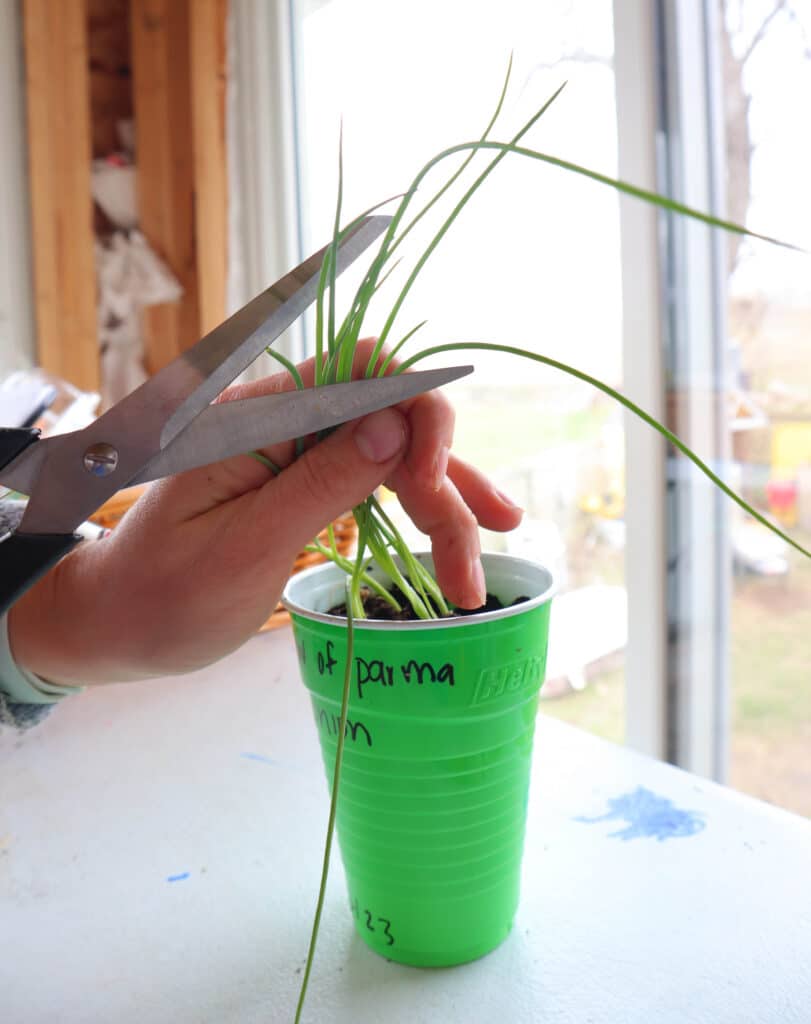
PLANTING ONIONS FOR OVER-WINTERING
For overwintering onions (for an early spring harvest), direct sow seeds outdoors 6-8 weeks before your average first frost date in late autumn. Once the first heavy frost hits, cover onions with a heavy layer of mulch.
WHAT TO DO WITH ONIONS AFTER PLANTING IN GARDEN
Onions need to be kept well-watered because of their shallow root system. If they do not get consistent water, your onion bulbs will be smaller. Don’t over water though because that can make onions rot.
If you till your garden, you might want to add a layer of mulch around the onions to prevent the soil from drying out.
HOW TO HARVEST ONION PLANTS
To harvest green onions, harvest a leaf or two at a time, just a couple inches from the tops. This will continue to let the bulb grow into larger onions. However, if you aren’t worried about bulb development and only want green onions, harvest them anytime after they begin to form bulbs for new onions.
Once the bulb begins to form on an onion, you can actually start harvesting whenever you need an onion. To get the full benefit of your onions though, you want to wait until they are fully mature. The signs are very obvious. The main stalk will start to flop over. The green tips will turn yellow or brown. If you planted from seed, this will be about 100-120 days.
Once your onions are mature, check your weather forecast. If you have 3-4 sunny days in a row, pull the onion plants out of the ground very gently but leave them to dry out right there on top of the soil for a day or two.
After harvesting your onions, you can use them up right away or cure them for winter storage.
RECIPES THAT USE HOMEGROWN ONIONS
1898 Omelet (not actually an omelet, but a delicious, hearty breakfast)
PIN HOW TO GROW ONIONS HERE:
This post may contain affiliate links which I would receive a small commission at no additional cost to you. Please read disclaimer and privacy policy for full disclosure.
